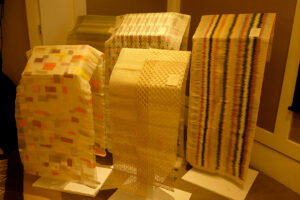By Giselle P. Kasilag WEAVING is one of the most ancient traditions common to all civilizations. The history of the world is written in the threads and expressed in the patterns.
While the method may be old, HABI: The Philippine Textile Council is confident that weaving is where our future lies. The process may have remained largely unchanged but many innovations have been developed that are putting the spotlight back on Philippine textiles. Thus, there is much excitement for this year’s Likhang Habi Market Fair, happening at the Glorietta Activity Center from Oct.
18 to 20. “Our theme this year is ‘Earth to Loom: Celebrating Natural Dyes in the Philippines,’” announced HABI president Mia Villanueva at a press conference. “We try to think of issues and things that affect the Philippine textile industry, and one thing we thought of recently is to put this in the forefront because, usually, what people use is chemical dyes.
” The council is encouraging the use of natural dyes which are more sustainable for the industry and better for the environment. But the risks brought about by deforestation, unbridled land development, and climate change are all infringing on the wealth of plant life used in dying threads and textiles. If unchecked, they threaten the range of colors should certain plants cease to be available to weavers.
The relationship between the weaver, the industry, and the environment could not be more direct. The challenges faced by one are also devastat.


















